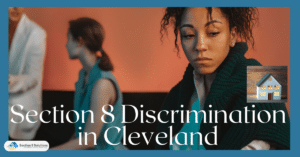The Aurora Section 8 Transfer Policies offer guidelines for voucher holders seeking to relocate within or outside the city. Ensuring a smooth transition, these policies emphasize the importance of notifying the housing authority, meeting all eligibility requirements, and adhering to both the departure and receiving jurisdiction’s procedures. Voucher holders should be diligent in understanding these protocols to avoid any disruption in their housing assistance.
In this guide, we’ll unpack the Aurora Section 8 Transfer Policies step by step, shedding light on the eligibility criteria, documentation requirements, and the differences between local and out-of-jurisdiction moves.

Eligibility Criteria for Transfer
Navigating the Aurora Section 8 transfer process requires a keen understanding of its eligibility criteria. Before considering a move, it’s essential to be aware of the key qualifications that can influence your transfer eligibility.
- Voucher Status: Active voucher holder with commendable standing with the Aurora Housing Authority.
- Residency Duration: Certain periods of residency may be required before becoming eligible for transfer.
- Family Status: Alterations in family composition, such as marriage or a child’s birth, can influence eligibility.
- Income Dynamics: Fluctuations in family income, whether an increase or decrease, can reshape transfer qualifications.
- Lease Adherence: Compliance with the existing lease and zero outstanding financial commitments to the landlord is pivotal.
- Prompt Reporting: Timely reporting of any changes in household or income to the housing authority is essential.
Grasping these eligibility criteria serves as the bedrock for a smooth transfer journey. Always ensure that you’re aligned with these requirements, and when in doubt, reach out to the Aurora Housing Authority for clarification. Proper preparation and understanding can pave the way for a successful relocation within the Section 8 program.

Steps to Initiate the Transfer
Relocating within the Aurora Section 8 program is not as simple as just packing up and moving. There are procedural steps to follow, and it all begins with informing the housing authority. Ensuring you take the right steps from the onset can lead to a hassle-free transfer experience.
- Initial Notification: Reach out to the Aurora Housing Authority to express your intent to transfer. This can often be done via phone, email, or an in-person visit.
- Completion of Transfer Request Form: The housing authority will typically provide a specific form to be filled out detailing the reasons for the transfer and other essential information.
- Gather Necessary Documents: This might include proof of income changes, evidence supporting family status change, or any other pertinent documentation the housing authority deems necessary.
- Attend Mandatory Meetings: Some housing authorities may require voucher holders to attend informational or counseling sessions before approving the transfer.
- Await Approval: After submitting the necessary paperwork, there’s often a waiting period during which the housing authority reviews the request and documents.
- Receive Transfer Packet: Once approved, you’ll be given a transfer packet that often contains details of your new housing options, rights, and responsibilities.
The transfer initiation process is meticulous to ensure the integrity of the Section 8 program and to assist residents in their relocation journey. Being organized, prompt, and responsive can make this transition smoother. Remember, the Aurora Housing Authority is there to assist, so don’t hesitate to ask questions or seek clarity at any step along the way.

Relocating Within Aurora vs. Outside Aurora
Deciding to relocate under the Aurora Section 8 program necessitates an understanding of the differences between moving within the city’s limits versus stepping outside into a different jurisdiction. Within Aurora, the process is generally more streamlined, requiring notification to and coordination solely with the Aurora Housing Authority.
In contrast, moving outside Aurora introduces the complexity of inter-jurisdictional transfers, involving not only the Aurora Housing Authority but also the housing authority of the receiving jurisdiction. This latter scenario often demands more intricate coordination, potentially involving additional paperwork, varied inspection protocols, and a deeper understanding of the new jurisdiction’s specific policies and requirements.

Rights and Responsibilities of Voucher Holders
Navigating the Aurora Section 8 program’s transfer process not only requires understanding the procedural steps but also recognizing one’s rights and responsibilities. As a voucher holder, it’s essential to strike a balance between what you’re entitled to and what’s expected of you during this journey.

1. Rights of Voucher Holders
Voucher holders possess rights designed to safeguard their interests throughout the transfer process. These rights are anchored in principles of fairness and equity. For instance, every voucher holder is entitled to non-discrimination, meaning they should receive equal treatment regardless of race, gender, age, or disability. Furthermore, timely communication from the housing authority ensures transparency and that holders are kept in the loop about critical decisions.
2. Responsibilities During Transfer
While rights protect voucher holders, responsibilities ensure the integrity and efficiency of the transfer process. When initiating a transfer, accurate representation of information is paramount to avoid delays or complications. Attending all required meetings is another crucial responsibility, as these sessions often provide valuable insights, updates, or clarifications.

3. Ensuring Compliance with Lease Agreements
Transitioning between homes doesn’t absolve voucher holders from their current obligations. Throughout the transfer process, it’s vital to maintain an impeccable record with the current landlord. This means ensuring rent is paid punctually, the property is maintained in good condition, and all terms of the lease are upheld.
4. Open Communication with Housing Authorities
A successful transfer is often anchored in effective communication. Voucher holders are encouraged to actively engage with housing authorities. This includes promptly responding to inquiries, providing all requested documentation in a timely manner, and asking questions when clarity is needed. Transparent communication can preempt potential misunderstandings and ensure that both the voucher holder and the housing authorities are on the same page.
Understanding your rights while simultaneously embracing your responsibilities sets the stage for a seamless transfer experience. Actively engaging with the nuances of the process and maintaining an open dialogue with the housing authorities not only ensures a successful relocation but also reinforces the collaborative spirit of the Aurora Section 8 program.

Conclusion
Relocating under the Aurora Section 8 program requires careful consideration and adherence to specific guidelines. By understanding eligibility criteria, following proper procedural steps, recognizing differences between local and out-of-jurisdiction moves, and being aware of your rights and responsibilities as a voucher holder, you can pave the way for a smooth transfer process. Remember to communicate openly with the housing authorities and seek clarification when needed to ensure a successful and stress-free relocation.












